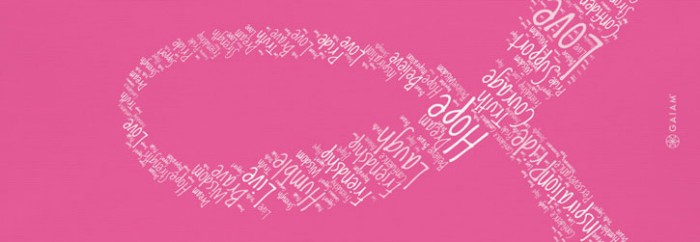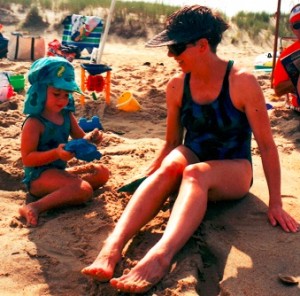The words on the phone croaking from my father’s mouth paralyzed me, and for a brief moment time stopped. “The doctor called about your mother. The biopsy revealed cancer.” I slowly ended the call with a shaking finger.My body tensed in disbelief before succumbing to a series of sobs, compelling my roommate to hold me as if to squeeze out the enveloping pain. The family picture on my desk that once brought a sweet smile to my face, now served as an ever-present reminder that life brought both beautiful and ugly moments. Before now the ugly moments of my life challenged me, but never had a moment given death the opportunity to intercede.
The pain in my head expanded like a balloon due to an endless river of tears flowing down my cheeks, leaving no room for optimistic thoughts. The soft buzz of my phone with messages expressing prayers and thoughts for my family gently pieced parts of my imploding heart. Yet doubt and fear quickly overtook me, as I drifted farther and farther away from my previous perfect, comfortable life. Who existed in this new journey to hold my hand and to confirm life would once again resume an ordinary pattern? What scared me more than the cancer clawing through my mother’s vital cells was the journey we would embark on for the next couple of years.
For one of the first times in my faith journey, I grappled with the overwhelming fear that maybe, just maybe, no higher power existed to answer my prayers. How could a God so in love with his creatures want them to experience suffering and pain? As far as I could see, no amount of human understanding could shed light on this situation, yet I acted like a foolish child who believed she could make sense of it all. Of all the people to endure such hardships, I cried that my image of perfection, my mother, was the one chosen to endure such a deadly disease. In front of me and the rest of my siblings, she presented herself as a woman untouched by feelings of misery and instead wrapped in affection for her children.
My father, on the other hand, daily witnessed her emotional breakdowns as the disease attacked her narrowing frame. Her attempt to hide her true feelings while with me began to separate us from one another, and I drifted farther away from knowing the woman whose hand I once would run to hold while crossing the street. As she sat on the bed and talked about how she might never witness my father walking me down the aisle, or my first child crawling across the floor, tears began to stream down her face. How could her newly adult daughter express encouragement in such a moment when she herself feared the same situation? I felt detached. While the most appropriate response would have been a supportive hug, smile, and an explanation that “optimism is key,” I froze within the moment and instead succumbed to tears. For so many years, I had gathered most of my strength from my mother, my role model. The time had finally come when I was forced to look for another source of strength, but who or what could be measured next to my idea of perfection?
Although my friends expressed words of sympathy to ease the consuming pain, I couldn’t comprehend how they could sympathize with my situation. However, one conversation with a friend made a startling difference. After I poured out my grief, she shared that her mother had been diagnosed with and defeated breast cancer two years earlier. Perhaps the most powerful remark she expressed was that I would not have to walk through this experience without her empathetic heart. Within that precious moment, two notable things occurred. One, I realized that some of my pain and anxiety had disappeared. Two, as she squeezed my trembling hand, I became consumed with the desire to act, to write, to do something in an effort to help my mother and the millions of others diagnosed with breast cancer. While riding a free-falling rollercoaster of my emotions, one of the greatest gifts I decided to give myself was the gift of knowledge. I wanted to be someone who understood the signs and symptoms of breast cancer, and be an activist in imparting that knowledge to others. Every person should have access to statistics and knowledge about breast cancer in order to spread awareness and advocate prevention.
In the United States alone, approximately one in eight women during their lifetime will be diagnosed with invasive breast cancer (“U.S. Breast Cancer Statistics”). As a woman increases in age, her likelihood of developing breast cancer also increases (“U.S. Breast Cancer Statistics”). One of the best methods of prevention is to start yearly mammogram screenings between the age of forty and forty-five. (“U.S. Breast Cancer Statistics”). My mother started mammogram screenings when she turned fifty, and her last visit at the age of fifty-six proved to be the one that possibly saved her life. While death rates have vastly decreased since the introduction of better treatment and more widespread use of mammograms, approximately 40, 290 women are still predicted to die this year from breast cancer alone (“U.S. Breast Cancer Statistics”). We, as a society, must join together to continue spreading awareness and to grant men and women the opportunity for free mammograms in every part of our country.
It is especially important for those genetically prone to breast cancer to start mammograms early, as their risk for developing breast cancer may be double that of the average woman (“U.S. Breast Cancer Statistics”). Because a mammogram does not guarantee accurate results 100% of the time, every woman should be aware of her breast’s normal appearance and report any changes or concerns immediately to her health care provider (“Women’s Health”). Regular clinical checkups are worth the effort to avoid the discovery of a late stage, metastatic tumor. Sometimes mammogram screenings are not readily available, but there are several signs and symptoms which should help women know if they need medical attention. Some of the most obvious signs of cancer include breast pain, swelling, lumps, redness, irritation, or thickening of one or both of the breasts (“U.S. Breast Cancer Statistics”). While changes such as these may also indicate an infection, it is always better to be checked than risk a disastrous healthcare situation (“U.S. Breast Cancer Statistics”). It is also possible, as in my mother’s case, that none of the above symptoms are present. Instead, the cancer is located somewhere within one or both of the breasts and is undetectable without mammography or ultrasound. Whether a woman is concerned about changes, or simply wants a yearly check-up, both are valid reasons for screening.
Finally, every woman should be aware of how to reduce her risk of developing breast cancer over the span of her lifetime. According to the Mayo Clinic, a few ways to reduce the risk include limiting excessive alcohol consumption, staying physically active, avoiding radiation such as medical imaging and environmental sun exposure, and avoiding tobacco products (“Women’s Health”). While none of these steps ensure breast cancer prevention, they are healthy lifestyle changes that decrease the likelihood of its occurrence. Understanding the statistics, signs, and methods to avoid breast cancer are crucial in fighting and approaching the disease. Thankfully, many organizations like Susan G. Komen exist to increase awareness of breast cancer detection, and offer support to those diagnosed with the disease.
Every spring during my high school career, I passed out pamphlets with statistical facts on breast cancer to race-goers at the annual Susan G. Komen Race for the Cure in Richmond, Virginia. Some of my friends and I initially participated in the activity to complete required community service hours. Others took advantage of the opportunity to show their support for friends and family members who previously or currently suffered from breast cancer. About halfway through a day of promoting breast cancer awareness one spring, my friend and I were asked by a local TV station host why we chose to volunteer with Susan G. Komen. I realized that part of the real reason I volunteered was to support friends whose parents and relatives had died from breast cancer. In retrospect, I now realize that I am one of those people. I am one of those indirectly suffering from breast cancer’s effects on family members.
Without a doubt, my commitment to breast cancer research has jumped onto a new train as I join the ranks of sons, daughters, wives, husbands, and others who are helping someone precious fight this illness. As I once supported those who suffered either directly or indirectly from breast cancer’s effects, I can now openly receive support and grab other’s hands to join the fight. As of 2015, statistics show that within the United States there are over 2.8 million breast cancer survivors (both men and women) who have completed treatment and moved into the next stages of their lives (“U.S. Breast Cancer Statistics”). Our survivors need as many people as possible to stand behind them and join their fight against breast cancer. One day, I hope my mother will proudly be one of them.
Literature Cited:
“American Cancer Society Recommendations for Early Breast Cancer Detection in Women without Breast Symptoms.” American Cancer Society. American Cancer Society, 20 Oct. 2015. Web. 04 Nov. 2015.
Bodge, Trae. Pink Ribbon Breast Cancer Yoga Mat. Digital image. The Real Deal. RetailMeNot, 1 Oct. 2013. Web. 1 Dec. 2015.
“U.S. Breast Cancer Statistics | Breastcancer.org.” Breastcancer.org. N.p., n.d. Web. 04 Nov. 2015.
“Women’s Health.” Breast Cancer Prevention: How to Reduce Your Risk. Mayo Clinic, 12 Dec. 2012. Web. 05 Nov. 2015.

